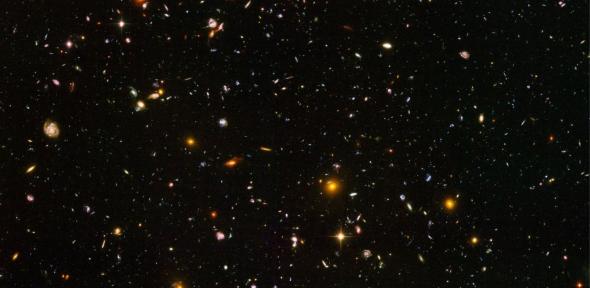
Submitted by Pooja Pandey on Tue, 10/05/2022 - 17:30
Dr. Roberto Maiolino has been awarded the Royal Society fellowship for his cutting edge research in extragalactic astronomy. His research focuses upon the formation of galaxies using observations collected at some of the largest ground-based and space telescopes.
I am truly honoured by such a prestigious appointment. Being a Fellow of the Royal Society will certainly foster my research activities and will allow me to further promote exciting, cutting-edge projects Roberto Maiolino
The Royal Society fellowship is awarded to the most distinguished scientists, engineers and technologists from the UK and Commonwealth. Dr. Roberto Maiolino, professor of Experimental Astrophysics at the Cavendish Laboratory, has been honoured with the prestigious fellowship. The fellows are elected for life, based upon their excellent achievements in science through a peer review.
Prior to his appointment at the University of Cambridge, he was an astronomer at the Arcetri Astrophysical Observatory (Florence) between 1997 and 2006. Subsequently, from 2006 to 2012, he was a senior astronomer at the Astronomical Observatory of Rome. In 2018, he was honoured with the ‘Order of the Star of Italy’ and in 2019, appointed as the Honorary Professor at University College, London.
At present, through his work at the Cavendish and other associations, Dr. Maiolino is active in multiple areas of extragalactic astronomy.
His current research focuses upon the formation of galaxies using observations collected at some of the largest ground-based and space telescopes. He has obtained key results on the interplay between the evolution of galaxies and the supermassive black holes at their centres. He has also investigated the enrichment of chemical elements across the cosmic epochs, as well as the origin and nature of dust particles in the early Universe.
Besides his role as a professor of Experimental Astrophysics at the Cavendish Laboratory and Director of the Kavli Institute for Cosmology, he is also a member of the Instrument Science Team at NIRSpec, the near infrared multi-object spectrograph for the James Webb Space Telescope. He is also the Project Scientist and Co-PI of MOONS, the Multi-Object near-IR spectrograph for the Very Large Telescope as well as the Project Scientist of ANDES - the high resolution spectrograph for the Extremely Large Telescope.
His election as a Royal Society fellow will further enrich his breakthrough research work in extragalactic astronomy. In his own words, “I am truly honoured by such a prestigious appointment. Being a Fellow of the Royal Society will certainly foster my research activities and will allow me to further promote exciting, cutting-edge projects.”
Image: Hubble Ultra Deep Field.
The view of nearly 10,000 galaxies is called the Hubble Ultra Deep Field. The snapshot includes galaxies of various ages, sizes, shapes, and colours.
Image Credit: NASA, ESA, and S. Beckwith (STScI) and the HUDF Team (as published on https://esahubble.org/)
